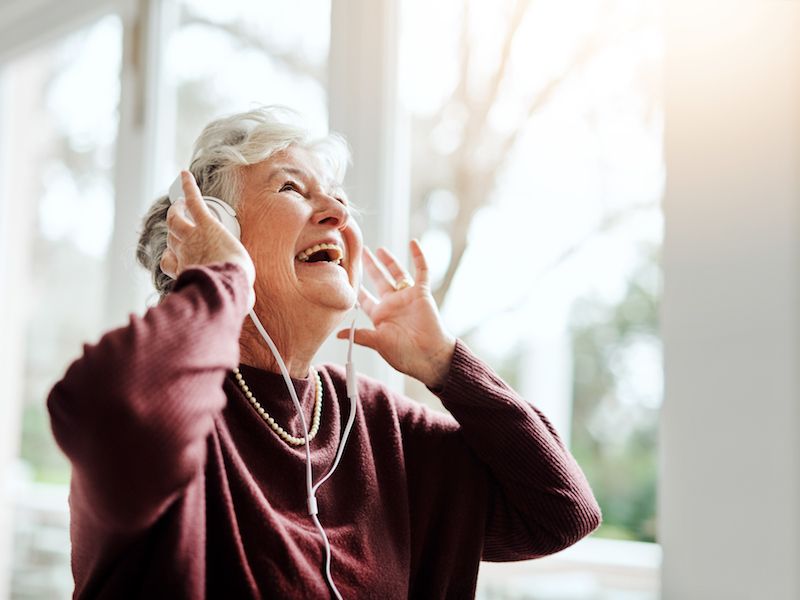
Individuals who work in loud surroundings such as construction sites or at heavy metal concerts are not the only ones affected by noise related loss of hearing. Recreation associated noise exposure can be just as dangerous as work related noise exposure. The most prevalent kind? Music, gaming, streaming video or anything else that you would listen to through earbuds or headphones.
You may be alarmed to learn that a mobile device can go that loud. But these devices can achieve continuous volumes of over 105 dB, which is near the average human threshold for pain. This is the volume where noise starts to literally cause pain in your ears. So what’s the answer for protecting your hearing against volume related damage.
It’s relevant here to consider the volume. An easy shorthand that’s widely recommended is the 60/60 rule: Listen with the volume at no more than 60% for no more than 60 minutes at a stretch (because the length of sound exposure matters, too).
Make a Setting on Your Hearing Aids For Listening to Music
Make certain, if you’re wearing hearing aids, you don’t try to drown out other noises by cranking your streaming music up too high. And there are better ways to listen to music so ask us about that as well. Hearing aids aren’t designed to make music clearer like they do with voices so if you’re really into music, you may have discovered this. We might be able to change the configuration to minimize feedback and noise while increasing some frequency to better the quality of sound while listening to music.
How to Pick The Best Headphones
When choosing headphones there are many options, particularly if you use hearing aids. There are various things to think about, though it’s largely a matter of personal choice.
Over-the-Ear Headphones
While the foam-covered earpieces that came with your old Walkman are basically a thing of the past, over-the-ear headphones have had a resurgence. They have a lot of options in style and color, are commonly endorsed by celebrities, and can be unexpectedly costly. And unlike those little foam pads, these go over the whole ear, stopping outside sounds.
Main-stream perception is that these are less dangerous than in-ear headphones because the source of the sound is further from your eardrum. But the fact is they’re usually capable of much louder sound than the smaller kind, the speakers are much bigger. Noise cancellation can be a helpful thing as long as you’re not missing out on important sounds like an oncoming car. But on the upside, you don’t need to compete with outside noise so you can enjoy your music at lower levels.
Earbuds
The normal earbuds that are included with devices such as iPhones are much maligned for their inferior quality of sound, although a lot of people still use them because hey, they came with the phone. Especially, with newer Apple phones, it’s simply easier to use the earbuds that were provided with the device because it most likely doesn’t have a headphone jack.
The drawback, aside from the poor sound quality, is that basic earbuds don’t cancel outside noises, so you’re more likely to pump up the sound level. It’s generally believed that inserting earbuds so close to your eardrum is the main issue but it’s really the volume.
Occluding or Isolating Earbuds
More comfortable than standard earbuds, models that have a round rubber tip are the choice of many because they help stop outside noise. A seal that stops outside noise from getting in is formed by the rubber tip which conforms to the shape of the ear. Not to sound like a broken record, but these types of earbuds have the same disadvantages as the other two (volume is the main problem), as well as carrying the same caution as over-the-ear headphones (they can block out warning sounds). And if you wear hearing aids, clearly these won’t work for you.
Several pairs will probably have to be evaluated before you find headphones that are right for you. Your expectations, acoustically, will be different dependant on what type of use you normally give them. The essential thing is to seek out headphones that make it comfortable for you to enjoy at a safe and secure volume.
How to Make Sure Your Hearing is Protected
Is it Safe, How Can I be Sure? There’s an app for that…If you use a smartphone, you can download the National Institute for Occupational Safety and Health’s free Sound Level Meter app. There are other apps you can get, but studies has discovered that the dependability of these other apps is spotty (in addition, for reasons yet unknown, Android-based apps have proven less reliable). That motivated NIOSH to develop an app of their own. The app lets you measure outside sounds, but you can also measure the sound coming from your device’s speakers, this means, the true volume of what’s going to your ears. You have to do a little work, but putting in place these types of protective measures can help safeguard your hearing.